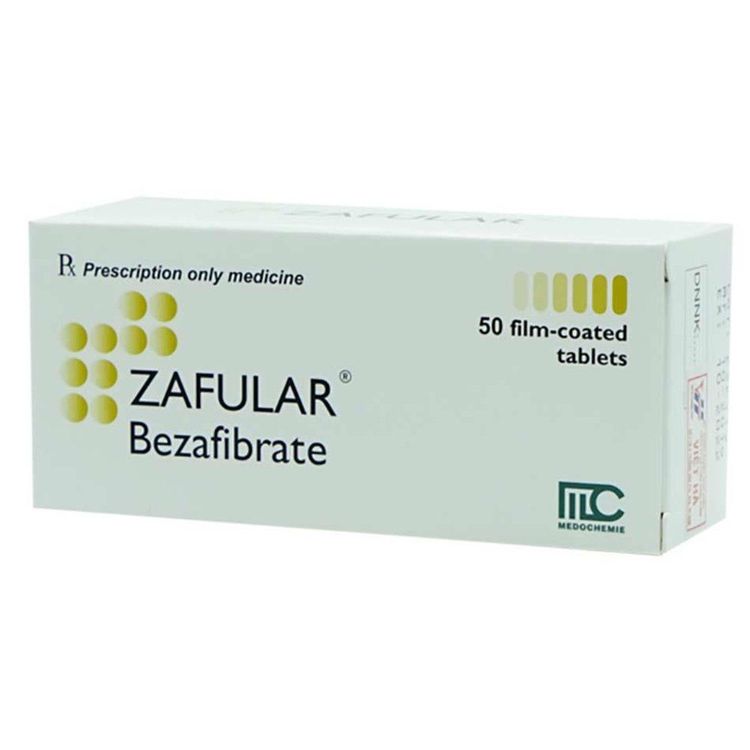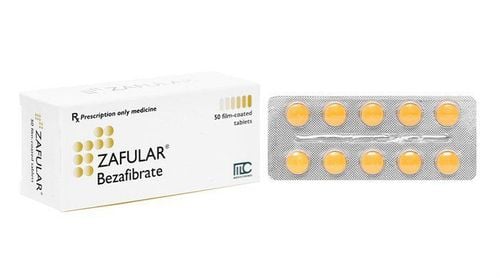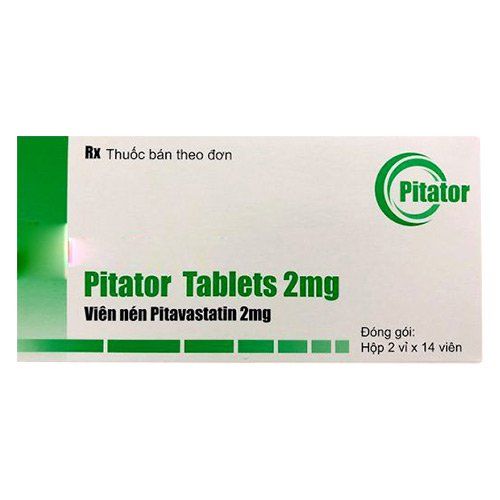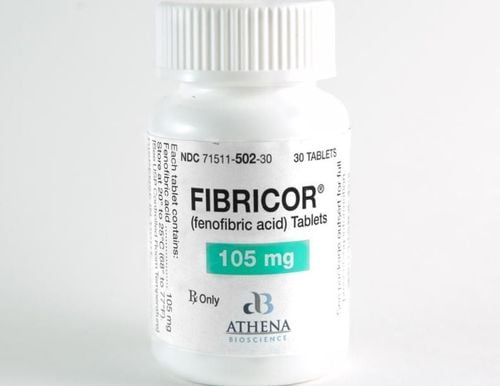This is an automatically translated article.
Zafular is indicated in the treatment of hyperlipidemia. It is used along with proper diet and exercise to help lower cholesterol, LDL, triglycerides, and raise HDL in the blood.
1. What does Zafular do?
Zafular medicine contains the main active ingredient is Bezafibrat, a derivative of fibric acid. Bezafibrat inhibits cholesterol biosynthesis in the liver, the main effect is to reduce very low density lipoprotein and increase high density lipoprotein (HDL). Therefore, Zafular is indicated for use in the treatment of hyperlipoproteinemia - types IIa, IIb, III, IV and V in people who have not responded well to diet and other appropriate measures.
2. How to take Zafular
Zafular is an oral medication. Take whole tablet with water during or immediately after a meal, must be combined with a fat-restricted diet.
Adults: The recommended dose is 1 tablet, 3 times a day. In susceptible patients, the dose should be increased slowly over 5 to 7 days to avoid gastrointestinal side effects; Children: Dosage of Bezafibrate for children and adolescents has not been established; Hepatic impairment: Bezafibrat is contraindicated in patients with severe hepatic impairment and is contraindicated with caution in mild hepatic impairment. Patients with renal impairment: Bezafibrat is contraindicated in patients on hemodialysis. Dosage in patients with renal impairment should be adjusted based on serum creatinine concentration or creatinine clearance; Elderly patients: Adjust dose based on serum creatinine clearance. Note: The above dosage is for reference only. The specific dose depends on the condition and the progression of the disease. To get the right dose, you need to consult your doctor or healthcare professional.
3. Contraindications of the drug Zafular
Zafular is contraindicated in the following cases:
Hypersensitivity to Bezafibrat, other fibrates and any excipients in the drug's composition; Patients with advanced liver failure (except in cases of fatty liver associated with elevated triglycerides); Patients with gallbladder disease with or without gallstone disease ; Patients with nephrotic syndrome and severe renal failure (serum creatinine concentration above 530 umol/1, creatinine clearance less than 15 ml/min); on hemodialysis.

Thuốc Zafular được chỉ định trong điều trị tình trạng tăng lipid máu
4. Side effects of the drug Zafular
When using Zafular, you may experience unwanted effects (ADRs).
Common side effects, ADR > 1/100:
Gastrointestinal: Digestive disorders; Nutrition: Reduces cravings. Uncommon, 1/1000 < ADR < 1/100
Neurological: Dizziness, headache; Gastrointestinal: Diarrhea, nausea; Musculoskeletal tissue, connective tissue: Muscle weakness, muscle pain, cramps. Instructions on how to manage ADR: In case of unexplained muscle pain, treatment with Bezafibrat must be stopped and a creatinine kinase (CK) measurement performed to check.
5. Precautions when using Zafular
The use of Zafular drug should be cautious of the following factors:
Bezafibrat should be used with caution in patients with renal impairment. When serum creatinine levels gradually increase or do not follow the recommended dose, rhabdomyolysis may occur. If used with Cholestyramine, it must be taken 3 hours apart; Patients must reduce the dose of anticoagulants by 1/3 if used concomitantly with Bezafibrat; Do not combine Bezafibrat with MAO inhibitors, Perhexilin; Caution should be exercised in combination with statins due to increased incidence and severity of myopathy; Bezafibrat and other fibrates can cause myopathy, manifesting as weakness or pain, often accompanied by significant elevations of creatine kinase (CPK); Ability to drive and use machines: The drug may cause effects such as dizziness, headache. Therefore, patients should not drive or operate machinery if they experience these side effects while taking the drug; Pregnancy: It should not be used in women who are pregnant or of childbearing potential without using contraceptives until the potential benefits and risks have been evaluated. Lactation: It is not known whether Bezafibrat is excreted in human milk. Therefore, it should not be used by nursing women. If necessary, breast-feeding should be discontinued.

Khi sử dụng thuốc Zafular, bạn có thể gặp các tác dụng không mong muốn
6. Drug interactions Zafular
Zafular may interact with the following drugs:
Oral anticoagulants: Concomitant use with Bezafibrate increases the risk of bleeding. Therefore, when used in combination, it is necessary to reduce the dose of anticoagulants by half and monitor the INR; Antidiabetic drugs: Concomitant use with Bezafibrate reduces the effectiveness of antidiabetic drugs, including Insulin; Bile acid-binding resins: Absorption of Bezafibrate may be decreased when co-administered with bile acid-binding resins (eg colestyramine, colestipol). Therefore, 2i doses should be taken at least 2 hours apart; Cyclosporin: A reversible decline in renal function (with a corresponding increase in serum creatinine) has been reported in transplant patients treated with the combined immunosuppressant bezafibrate. Treatment should be discontinued if the laboratory parameters change significantly; MAO Inhibitors (Monoamine oxidase): Contraindicated with Bezafibrate due to the risk of hepatotoxicity; Competitive inhibitors with HMG - CoA reductase: The combination of Bezafibrate and competitive inhibitors with HMG - CoA reductase can lead to the risk of myotoxicity. In summary, the drug Zafular is used in the treatment of hyperlipidemia. All information above is for reference only. The effective and safe use of drugs should be under the guidance of a qualified physician.
Please dial HOTLINE for more information or register for an appointment HERE. Download MyVinmec app to make appointments faster and to manage your bookings easily.













